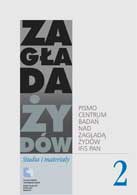Menu
- Main Page
- About us
- Research
- Publications
- Links
- Contact
- Archiwum
- Holocaust. Studies and Materials
the Center's Journal - NIGHT WITHOUT AND END - »FAILED CORRECTION«
- Wybór źródeł
- EHRI PL
News
Programme of Center's academic seminars for winter term 2025
We are pleased to announce the return of our scientific seminar series in less than a month, and warmly invite all interested parties to attend. The seminars will be held on the second or third Wednesday of each month, both in person at the Institute of Philosophy and Sociology of the Polis...
M. Turski Historical Award of Polityka for Justyna Majewska
It is with undisguised pride we report that our colleague Dr. Justyna Majewska has been awarded the Marian Turski POLITYKA Historical Prize for her book debut, "Mury i szczeliny. Przestrzenie getta warszawskiego /Walls and Slits. Spaces of the Warsaw Ghetto". We are very happy and...
Call for Articles - Holocaust Studies and Materials 2026
Call for Articles 2026 Call for Articles Connecting scholarly reflection on the Holocaust to the present - new sources and technologies in research The past decade has seen a breakthrough in Holocaust research, both in terms of the availability of archival sources and the digital ...
Farewell to Marian Turski
It is with profound sorrow that we bid farewell to Marian Turski—a distinguished journalist, historian, and Survivor. An extraordinary man whose voice resonated deeply, he not only shared the lessons of the past but actively championed courage, solidarity, and empathy in the face of evil. ...
Center in EHRI PL consortium
Polish Center for Holocaust Research of the Institute of Philosophy and Sociology of the Polish Academy of Sciences, together with the E. Ringelblum Jewish Historical Institute and the Center for Jewish Studies of the University of Lodz, are creating a national node of the European Holocaust Research Infrastructure within the framework of ERIC
NEWSLETTER
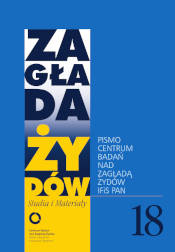 Zagłada Żydów.
Zagłada Żydów.
Studia i Materiały
nr 18, R. 2022
Warszawa 2022
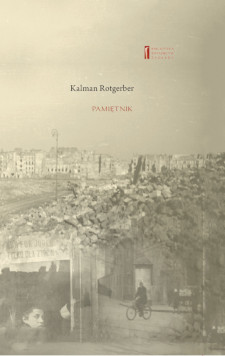 PAMIĘTNIK
PAMIĘTNIK
Kalman Rotgeber
oprac. Aleksandra Bańkowska, wstęp Jacek Leociak
Warszawa 2021
Zagłada Żydów.
Studia i Materiały
nr 17, R. 2021
Warszawa 2021
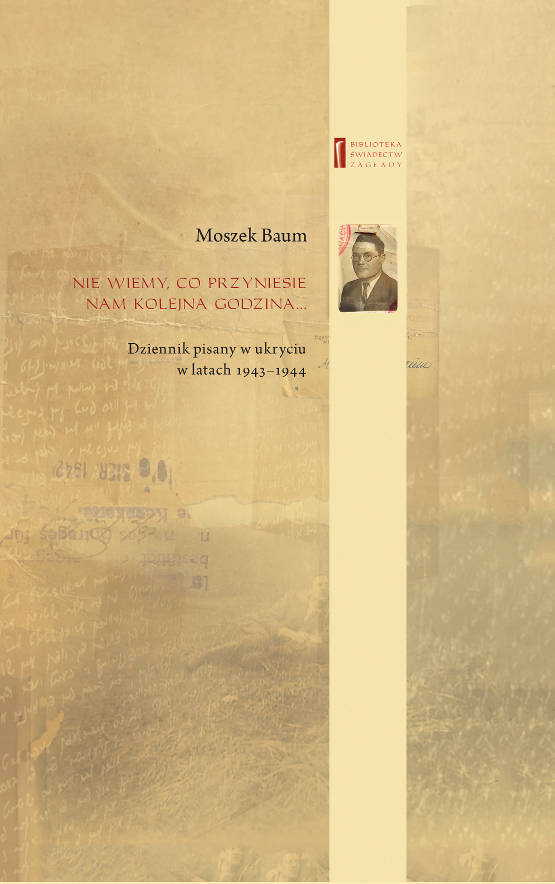 NIE WIEMY CO PRZYNIESIE NAM KOLEJNA GODZINA ...
NIE WIEMY CO PRZYNIESIE NAM KOLEJNA GODZINA ...
Dziennik pisany w ukryciu w latach 1943-1944
Moszek Baum, oprac. Barbara Engelking, tłum. z jidysz Monika Polit
Warszawa 2020
Zagłada Żydów.
Studia i Materiały
nr 16, R. 2020
Warszawa 2020
.jpg) Aryjskiego Żyda wspomnienia, łzy i myśli
Aryjskiego Żyda wspomnienia, łzy i myśli
Zapiski z okupacyjnej Warszawy
Sewek Okonowski, oprac. Marta Janczewska
 PISZĄCY TE SŁOWA JEST PRACOWNIKIEM
PISZĄCY TE SŁOWA JEST PRACOWNIKIEM
GETTOWEJ INSTYTUCJI ...
'z Dziennika' i inne pisma z łódzkiego getta
Józef Zelkowicz, tłum. z jidysz, oprac. i wstęp. Monika Polit
Warszawa 2019
CZYTAJĄC GAZETĘ NIEMIECKĄ ...
Dziennik pisany w ukryciu w Warszawie w latach 1943-1944
Jakub Hochberg, oprac. i wstępem opatrzyła Barbara Engelking
Warszawa 2019
Zagłada Żydów.
Studia i Materiały
nr 15, R. 2019
Warszawa 2019
.jpg) Zagłada Żydów.
Zagłada Żydów.
Studia i Materiały
nr 14, R. 2018
Warszawa 2018
 DALEJ JEST NOC. Losy Żydów w wybranych powiatach okupowanej Polski
DALEJ JEST NOC. Losy Żydów w wybranych powiatach okupowanej Polski
red. i wstęp Barbara Engelking, Jan Grabowski
Warszawa 2018
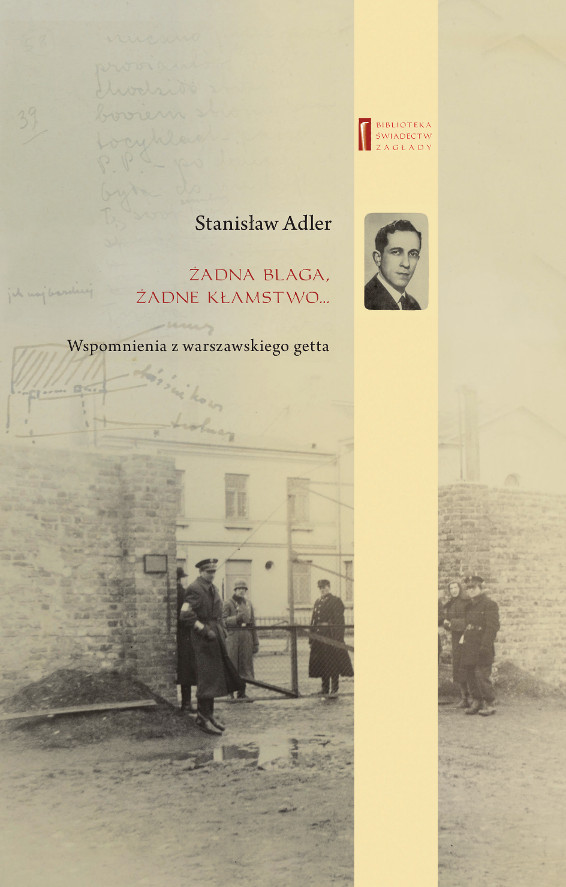 ŻADNA BLAGA, ŻADNE KŁAMSTWO ...
ŻADNA BLAGA, ŻADNE KŁAMSTWO ...
Wspomnienia z warszawskiego getta
Stanisław Adler, oprac. i wstępem opatrzyła Marta Janczewska
Warszawa 2018
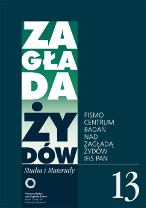 Zagłada Żydów.
Zagłada Żydów.
Studia i Materiały
nr 13, R. 2017
Warszawa 2017
 TYLEŚMY JUŻ PRZESZLI ...
TYLEŚMY JUŻ PRZESZLI ...
Dziennik pisany w bunkrze (Żółkiew 1942-1944)
Clara Kramer, oprac. i wstępem opatrzyła Anna Wylegała
Warszawa 2017
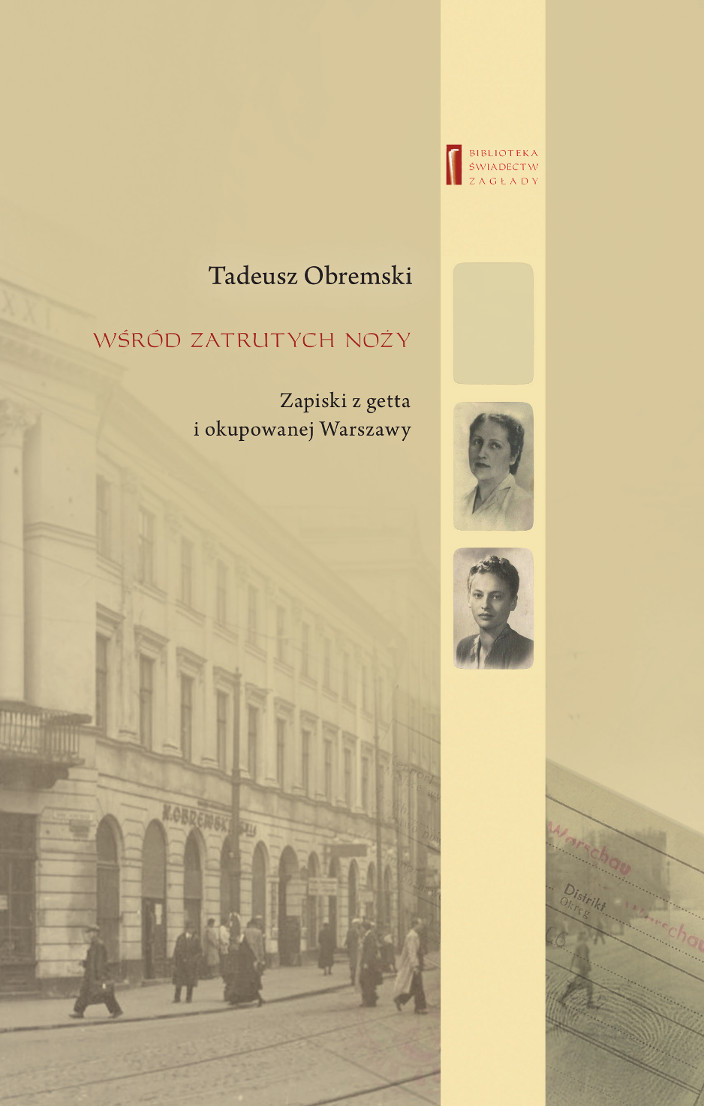 WŚRÓD ZATRUTYCH NOŻY ...
WŚRÓD ZATRUTYCH NOŻY ...
Zapiski z getta i okupowanej Warszawy
Tadeusz Obremski, oprac. i wstępem opatrzyła Agnieszka Haska
Warszawa 2017
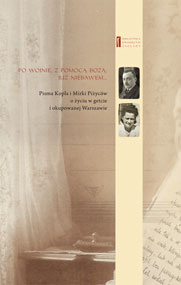 PO WOJNIE, Z POMOCĄ BOŻĄ, JUŻ NIEBAWEM ...
PO WOJNIE, Z POMOCĄ BOŻĄ, JUŻ NIEBAWEM ...
Pisma Kopla i Mirki Piżyców o życiu w getcie i okupowanej Warszawie
oprac. i wstępem opatrzyła Barbara Engelking i Havi Dreifuss
Warszawa 2017
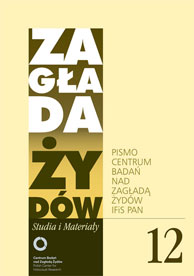 Zagłada Żydów.
Zagłada Żydów.
Studia i Materiały
nr 12, R. 2016
Warszawa 2016
.jpg) SNY CHOCIAŻ MAMY WSPANIAŁE ...
SNY CHOCIAŻ MAMY WSPANIAŁE ...
Okupacyjne dzienniki Żydów z okolic Mińska Mazowieckiego
oprac. i wstępem opatrzyła Barbara Engelking
Warszawa 2016
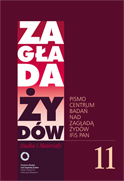 Zagłada Żydów.
Zagłada Żydów.
Studia i Materiały
nr 11, R. 2015
Warszawa 2015
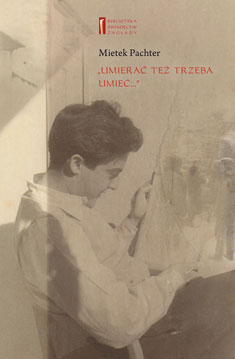 Mietek Pachter
Mietek Pachter
UMIERAĆ TEŻ TRZEBA UMIEĆ ...
oprac. B. Engelking
Warszawa 2015
 Zagłada Żydów.
Zagłada Żydów.
Studia i Materiały
nr 10, t. I-II, R. 2014
Warszawa 2015
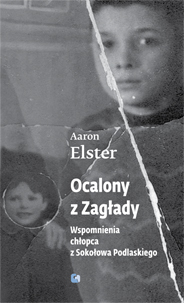 OCALONY Z ZAGŁADY
OCALONY Z ZAGŁADY
Wspomnienia chłopca z Sokołowa Podlaskiego
tłum. Elżbieta Olender-Dmowska
red .B. Engelking i J. Grabowski
Warszawa 2014
 ZAGŁADA ŻYDÓW. STUDIA I MATERIAŁY
ZAGŁADA ŻYDÓW. STUDIA I MATERIAŁY
vol. 9 R. 2013
Pismo Centrum Badań nad Zagładą Żydów IFiS PAN
Warszawa 2013
 ... TĘSKNOTA NACHODZI NAS JAK CIĘŻKA CHOROBA ...
... TĘSKNOTA NACHODZI NAS JAK CIĘŻKA CHOROBA ...
Korespondencja wojenna rodziny Finkelsztejnów, 1939-1941
oprac. i wstępem opatrzyła Ewa Koźmińska-Frejlak
Warszawa 2012
Raul Hilberg
PAMIĘĆ I POLITYKA. Droga historyka Zagłady
tłum. Jerzy Giebułtowski
Warszawa 2012
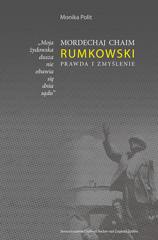 Monika Polit
Monika Polit
"Moja żydowska dusza nie obawia się dnia sądu."
Mordechaj Chaim Rumkowski. Prawda i zmyślenie
Warszawa 2012
.jpg) Dariusz Libionka i Laurence Weinbaum
Dariusz Libionka i Laurence Weinbaum
Bohaterowie, hochsztaplerzy, opisywacze. Wokół Żydowskiego Związku Wojskowego
Warszawa 2011
.jpg) Zagłada Żydów.
Zagłada Żydów.
Studia i Materiały
R. 2011, nr. 7; Warszawa 2011
.jpg) Jan Grabowski
Jan Grabowski
JUDENJAGD. Polowanie na Żydów 1942.1945.
Studium dziejów pewnego powiatu
Warszawa 2011
.jpg) Stanisław Gombiński (Jan Mawult)
Stanisław Gombiński (Jan Mawult)
Wspomnienia policjanta z warszawskiego getta
oprac. i wstęp Marta Janczewska
Warszawa 2010
Holocaust Studies and Materials
Journal of the Polish Center for Holocaust Research
Warssaw 2010
.jpg) Żydów łamiących prawo należy karać śmiercią!
Żydów łamiących prawo należy karać śmiercią!
"Przestępczość" Żydów w Warszawie, 1939-1942
B. Engelking, J. Grabowski
Warszawa 2010
Zagłada Żydów.
Studia i Materiały
R. 2010, nr. 6; Warszawa 2010
Wybór źródeł do nauczania o zagładzie Żydów
Ćwiczenia ze źródłami
red. A. Skibińska, R. Szuchta
Warszawa 2010
.jpg) W Imię Boże!
W Imię Boże!
Cecylia Gruft
oprac. i wstęp Łukasz Biedka
Warszawa 2009
Zagłada Żydów.
Studia i Materiały
R. 2009, nr. 5; Warszawa 2009
.jpg) Żydzi w powstańczej Warszawie
Żydzi w powstańczej Warszawie
Barbara Engelking i Dariusz Libionka
Warszawa 2009
 Reportaże z warszawskiego getta
Reportaże z warszawskiego getta
Perec Opoczyński
Warszawa 2009
 Notatnik
Notatnik
Szmul Rozensztajn
Warszawa 2008
.jpg) Holocaust
Holocaust
Studies and Materials.
English edition
2008, vol. 1; Warsaw 2008
.jpg) Źródła do badań nad zagładą Żydów na okupowanych ziemiach polskich
Źródła do badań nad zagładą Żydów na okupowanych ziemiach polskich
Przewodnik archiwalno-bibliograficzny
Alina Skibińska, wsp. Marta Janczewska, Dariusz Libionka, Witold Mędykowski, Jacek Andrzej Młynarczyk, Jakub Petelewicz, Monika Polit
Warszawa 2007
Zagłada Żydów. Studia i Materiały
R. 2007, nr. 3; Warszawa 2007
Prowincja noc.
Życie i zagłada Żydów w dystrykcie warszawskim
Warszawa 2007
.jpg) Utajone miasto.
Utajone miasto.
Żydzi po 'aryjskiej' stronie Warszawy [1941-1944]
Gunnar S Paulsson
Kraków 2007
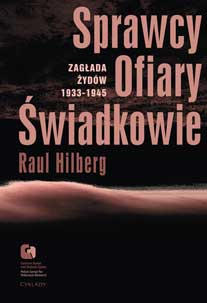 Sprawcy, Ofiary, Świadkowie.
Sprawcy, Ofiary, Świadkowie.
Zagłada Żydów, 1933-1944
Raul Hilberg
Warszawa 2007
Zagłada Żydów. Studia i Materiały
R. 2006, nr. 2; Warszawa 2006
"Jestem Żydem, chcę wejść!".
Hotel Polski w Warszawie, 1943.
Agnieszka Haska
Warszawa 2006
Zagłada Żydów. Studia i Materiały
R. 2005, nr. 1; Warszawa 2005
.jpg) 'Ja tego Żyda znam!'
'Ja tego Żyda znam!'
Szantażowanie Żydów w Warszawie, 1939-1943.
Jan Grabowski
Warszawa 2004
 'Szanowny panie Gistapo!'
'Szanowny panie Gistapo!'
Donosy do władz niemieckich w Warszawie i okolichach, 1940-1941
Barbara Engelking, Warszawa 2003
aaa
 Zagłada Żydów.
Zagłada Żydów.
Studia i Materiały
nr 18, R. 2022
Warszawa 2022
 PAMIĘTNIK
PAMIĘTNIK
Kalman Rotgeber
oprac. Aleksandra Bańkowska, wstęp Jacek Leociak
Warszawa 2021
Zagłada Żydów.
Studia i Materiały
nr 17, R. 2021
Warszawa 2021
 NIE WIEMY CO PRZYNIESIE NAM KOLEJNA GODZINA ...
NIE WIEMY CO PRZYNIESIE NAM KOLEJNA GODZINA ...
Dziennik pisany w ukryciu w latach 1943-1944
Moszek Baum, oprac. Barbara Engelking, tłum. z jidysz Monika Polit
Warszawa 2020
Zagłada Żydów.
Studia i Materiały
nr 16, R. 2020
Warszawa 2020
.jpg) Aryjskiego Żyda wspomnienia, łzy i myśli
Aryjskiego Żyda wspomnienia, łzy i myśli
Zapiski z okupacyjnej Warszawy
Sewek Okonowski, oprac. Marta Janczewska
 PISZĄCY TE SŁOWA JEST PRACOWNIKIEM
PISZĄCY TE SŁOWA JEST PRACOWNIKIEM
GETTOWEJ INSTYTUCJI ...
'z Dziennika' i inne pisma z łódzkiego getta
Józef Zelkowicz, tłum. z jidysz, oprac. i wstęp. Monika Polit
Warszawa 2019
CZYTAJĄC GAZETĘ NIEMIECKĄ ...
Dziennik pisany w ukryciu w Warszawie w latach 1943-1944
Jakub Hochberg, oprac. i wstępem opatrzyła Barbara Engelking
Warszawa 2019
Zagłada Żydów.
Studia i Materiały
nr 15, R. 2019
Warszawa 2019
.jpg) Zagłada Żydów.
Zagłada Żydów.
Studia i Materiały
nr 14, R. 2018
Warszawa 2018
 DALEJ JEST NOC. Losy Żydów w wybranych powiatach okupowanej Polski
DALEJ JEST NOC. Losy Żydów w wybranych powiatach okupowanej Polski
red. i wstęp Barbara Engelking, Jan Grabowski
Warszawa 2018
 ŻADNA BLAGA, ŻADNE KŁAMSTWO ...
ŻADNA BLAGA, ŻADNE KŁAMSTWO ...
Wspomnienia z warszawskiego getta
Stanisław Adler, oprac. i wstępem opatrzyła Marta Janczewska
Warszawa 2018
 Zagłada Żydów.
Zagłada Żydów.
Studia i Materiały
nr 13, R. 2017
Warszawa 2017
 TYLEŚMY JUŻ PRZESZLI ...
TYLEŚMY JUŻ PRZESZLI ...
Dziennik pisany w bunkrze (Żółkiew 1942-1944)
Clara Kramer, oprac. i wstępem opatrzyła Anna Wylegała
Warszawa 2017
 WŚRÓD ZATRUTYCH NOŻY ...
WŚRÓD ZATRUTYCH NOŻY ...
Zapiski z getta i okupowanej Warszawy
Tadeusz Obremski, oprac. i wstępem opatrzyła Agnieszka Haska
Warszawa 2017
 PO WOJNIE, Z POMOCĄ BOŻĄ, JUŻ NIEBAWEM ...
PO WOJNIE, Z POMOCĄ BOŻĄ, JUŻ NIEBAWEM ...
Pisma Kopla i Mirki Piżyców o życiu w getcie i okupowanej Warszawie
oprac. i wstępem opatrzyła Barbara Engelking i Havi Dreifuss
Warszawa 2017
 Zagłada Żydów.
Zagłada Żydów.
Studia i Materiały
nr 12, R. 2016
Warszawa 2016
.jpg) SNY CHOCIAŻ MAMY WSPANIAŁE ...
SNY CHOCIAŻ MAMY WSPANIAŁE ...
Okupacyjne dzienniki Żydów z okolic Mińska Mazowieckiego
oprac. i wstępem opatrzyła Barbara Engelking
Warszawa 2016
 Zagłada Żydów.
Zagłada Żydów.
Studia i Materiały
nr 11, R. 2015
Warszawa 2015
 Mietek Pachter
Mietek Pachter
UMIERAĆ TEŻ TRZEBA UMIEĆ ...
oprac. B. Engelking
Warszawa 2015
 Zagłada Żydów.
Zagłada Żydów.
Studia i Materiały
nr 10, t. I-II, R. 2014
Warszawa 2015
 OCALONY Z ZAGŁADY
OCALONY Z ZAGŁADY
Wspomnienia chłopca z Sokołowa Podlaskiego
tłum. Elżbieta Olender-Dmowska
red .B. Engelking i J. Grabowski
Warszawa 2014
 ZAGŁADA ŻYDÓW. STUDIA I MATERIAŁY
ZAGŁADA ŻYDÓW. STUDIA I MATERIAŁY
vol. 9 R. 2013
Pismo Centrum Badań nad Zagładą Żydów IFiS PAN
Warszawa 2013
 ... TĘSKNOTA NACHODZI NAS JAK CIĘŻKA CHOROBA ...
... TĘSKNOTA NACHODZI NAS JAK CIĘŻKA CHOROBA ...
Korespondencja wojenna rodziny Finkelsztejnów, 1939-1941
oprac. i wstępem opatrzyła Ewa Koźmińska-Frejlak
Warszawa 2012
Raul Hilberg
PAMIĘĆ I POLITYKA. Droga historyka Zagłady
tłum. Jerzy Giebułtowski
Warszawa 2012
 Monika Polit
Monika Polit
"Moja żydowska dusza nie obawia się dnia sądu."
Mordechaj Chaim Rumkowski. Prawda i zmyślenie
Warszawa 2012
.jpg) Dariusz Libionka i Laurence Weinbaum
Dariusz Libionka i Laurence Weinbaum
Bohaterowie, hochsztaplerzy, opisywacze. Wokół Żydowskiego Związku Wojskowego
Warszawa 2011
.jpg) Zagłada Żydów.
Zagłada Żydów.
Studia i Materiały
R. 2011, nr. 7; Warszawa 2011
.jpg) Jan Grabowski
Jan Grabowski
JUDENJAGD. Polowanie na Żydów 1942.1945.
Studium dziejów pewnego powiatu
Warszawa 2011
.jpg) Stanisław Gombiński (Jan Mawult)
Stanisław Gombiński (Jan Mawult)
Wspomnienia policjanta z warszawskiego getta
oprac. i wstęp Marta Janczewska
Warszawa 2010
Holocaust Studies and Materials
Journal of the Polish Center for Holocaust Research
Warssaw 2010
.jpg) Żydów łamiących prawo należy karać śmiercią!
Żydów łamiących prawo należy karać śmiercią!
"Przestępczość" Żydów w Warszawie, 1939-1942
B. Engelking, J. Grabowski
Warszawa 2010
Zagłada Żydów.
Studia i Materiały
R. 2010, nr. 6; Warszawa 2010
Wybór źródeł do nauczania o zagładzie Żydów
Ćwiczenia ze źródłami
red. A. Skibińska, R. Szuchta
Warszawa 2010
.jpg) W Imię Boże!
W Imię Boże!
Cecylia Gruft
oprac. i wstęp Łukasz Biedka
Warszawa 2009
Zagłada Żydów.
Studia i Materiały
R. 2009, nr. 5; Warszawa 2009
.jpg) Żydzi w powstańczej Warszawie
Żydzi w powstańczej Warszawie
Barbara Engelking i Dariusz Libionka
Warszawa 2009
 Reportaże z warszawskiego getta
Reportaże z warszawskiego getta
Perec Opoczyński
Warszawa 2009
 Notatnik
Notatnik
Szmul Rozensztajn
Warszawa 2008
.jpg) Holocaust
Holocaust
Studies and Materials.
English edition
2008, vol. 1; Warsaw 2008
.jpg) Źródła do badań nad zagładą Żydów na okupowanych ziemiach polskich
Źródła do badań nad zagładą Żydów na okupowanych ziemiach polskich
Przewodnik archiwalno-bibliograficzny
Alina Skibińska, wsp. Marta Janczewska, Dariusz Libionka, Witold Mędykowski, Jacek Andrzej Młynarczyk, Jakub Petelewicz, Monika Polit
Warszawa 2007
Zagłada Żydów. Studia i Materiały
R. 2007, nr. 3; Warszawa 2007
Prowincja noc.
Życie i zagłada Żydów w dystrykcie warszawskim
Warszawa 2007
.jpg) Utajone miasto.
Utajone miasto.
Żydzi po 'aryjskiej' stronie Warszawy [1941-1944]
Gunnar S Paulsson
Kraków 2007
 Sprawcy, Ofiary, Świadkowie.
Sprawcy, Ofiary, Świadkowie.
Zagłada Żydów, 1933-1944
Raul Hilberg
Warszawa 2007
Zagłada Żydów. Studia i Materiały
R. 2006, nr. 2; Warszawa 2006
"Jestem Żydem, chcę wejść!".
Hotel Polski w Warszawie, 1943.
Agnieszka Haska
Warszawa 2006
Zagłada Żydów. Studia i Materiały
R. 2005, nr. 1; Warszawa 2005
.jpg) 'Ja tego Żyda znam!'
'Ja tego Żyda znam!'
Szantażowanie Żydów w Warszawie, 1939-1943.
Jan Grabowski
Warszawa 2004
 'Szanowny panie Gistapo!'
'Szanowny panie Gistapo!'
Donosy do władz niemieckich w Warszawie i okolichach, 1940-1941
Barbara Engelking, Warszawa 2003
aaa
Nowy Swiat St. 72, 00-330 Warsaw; POLAND;
Palac Staszica room 120
e-mail: centrum@holocaustresearch.pl
NIGHT WITHOUT END - Failed correctiion - Dariusz Libionka
Dariusz Libionka see in PDF![]() Polish Center for Holocaust Research
Polish Center for Holocaust Research
Institute of Philosophy and Sociology of the Polish Academy of Sciences
centrum@holocaustresearch.pl
Response to the Review
by Tomasz Domański Entitled Correcting the Picture? Reflections on the Sources Used in "Night Without an End. Fate of Jews in Selected Counties of Occupied Poland"”1]
(Polish-Jewish Studies, Institute of National Remembrance [Warsaw, 2019])
Before I move on to the charges formulated by Dr. Tomasz Domański in his review, I need to briefly characterize what I wrote in my text published in Dalej jest noc. (Night without End). My text is 196 pages long. It deals with the extermination of the Jews in Miechów county (Kreis Miechów), part of the Cracow District and one of the largest counties in the General Government. The sheer scale shows that the research required substantial effort. The introduction contains a discussion of the literature, a characterization of Jewish settlements in the area, including Polish-Jewish relations, as well as the general situation in the inter-war period. The part that deals with the occupation beings by characterizing the local German administration and police forces, followed by a description of the situation of the Jews, with particular emphasis on the occupier’s policy toward the Jewish population, its size in the individual centers, the deportations within and outside of the county, the attempts to create ghettos, and of forced labor. A separate section concerns the course of the so-called liquidation operations (the early deportations, concentrations, and further deportation stages to the Bełżec death camp). I discuss in detail the extermination mechanism, the German perpetrators, both at the local and district levels (operations against Miechów Jews were a part of ‘Operation Reinhardt’, the code name of the extermination of Jews in the Generalgouvernement).
I tried to accurately describe in detail the course of the ‘liquidation operations’ in each of the several largest places. In this context, I also write about operations undertaken by formations composed of Poles that were harnessed to the mechanism of extermination: the ‘navy blue police’ that was subordinated to the gendarmerie, and the youth of the Construction Service (Baudienst). Their involvement, to be clear, was substantial due the local circumstances. I tried to estimate the number of Jews deported to death camps, those murdered on the spot, deported to labor camps in the Cracow District and outside it, as well as assess the number of people who tried to escape both in Kreis Miechów and in other areas of the Generalgouvernement as well as in Regierungsbezirk Katowice. In each case, I identify the difficulties related to the research and description of the issues, particularly with respect to estimates and calculations.
Afterwards, I discuss escapes from the county and the difficulties involved in hiding in the area. I take into consideration a number of phenomena, such as: leaving children for safekeeping, the cases of long-term and temporary hiding with the Poles, in the woods, in bunkers, hiding in hamlets on Aryan papers, and in landed estates. The parts where I discuss hunts for the Jews, involving the gendarmerie, the ‘navy blue’ police, firefighters, as well as cases of capturing Jews, cover about nineteen pages. The following pages deal with repressions for helping Jews (I analyze all cases described in the literature). I devote substantial space to a reconstruction of the massacre of the Baranek family of Siedliska village, who were the local counterpart of the Ulma family; let me add at this point, that Domański never mentioned these issues in his discussion nor did he inform his readers of my efforts. Finally, I discuss certain episodes that I believe to be the most tragic: the murder of Jews, including women and children, by members of local underground organizations. I take into account the response of the local Home Army structure to the acts of persecution and the persecutors of Jews. The last chapter deals with the situation of Jews after the war, including cases of anti-Jewish violence. This area was the second most dangerous for the Jews in the Cracow province (after the Podhale region). I have added annexes with data that I managed to determine. These refer to the number of survivors in the county (191) and outside of it (96); they also contain information about those killed in escape attempts and in hiding (584) , with the cause of death specified. These calculations are accompanied by comments, explanations, and reservations.
I discuss in such detail the scope of the research for two reasons: not only because the reviewer found it redundant, and many of his readers never read my text, but because only against this background is it possible to present the scope and the purpose of his ‘correction’. I call Domański’s text a ‘review’, although I should warn the reader that it is not a normal academic review, but a commissioned text – in my opinion, aimed at discrediting and ridiculing the editors and authors, portraying them as ignoramuses, frauds, and manipulators, as well as smart Alecs, who through operations known only to them obtain funding for their pitiful work that is hostile to state interest. Domański does not even try to hide his feeling of superiority over the object of his analysis, and systematically adopts a condescending tone. Throughout his review, he guides the reader by the hand, and teaches them how our book should be read. Not only does he tally errors, but primarily tries to expose, pass judgments, and stigmatize. For several weeks, his text has lived a life of its own, and achieves its purpose. For the time being, his text achieves its purpose in Poland, but soon it is to be translated into English and other languages, even though our book is available only in Polish. All this alone shows that we are not dealing with standard practice, but with an extensive and orchestrated propaganda campaign.
In this text I do not reference all of Domański’s remarks on the entire publication Dalej jest noc, because I am not the volume’s editor nor the author of the other texts, but only to the many opinions and criticisms leveled at me. The reviewer accuses me of distortion, falsification, manipulation, dishonesty, and supports his argument with a handful of examples. The reader of his text, primarily someone who hears about it from a third party, usually in a sensational tone, might get the impression that the problem is extremely serious. Domański forgets to, or simply did not want to, present the authors of the texts in question. He did not write who they are, their publications, where they work, etc., something that is standard practice for reviewers. What he did mention, however, were the sources of financing (pp.3–4)
Domański’s charges against me were not presented in a systematic way. He fails to address any of my claims or interpretations, and he does not question any estimates or numbers. He apparently believes that there is no need to do so, since the data quoted is allegedly ‘random.’ He treats my ‘own calculations’ presented in the tables with contempt, as he finds them totally worthless. The charges against me can be grouped into two categories: general and specific. The latter is usually treated as less serious, since Domański chose a different path: flaunting my infractions, which are given great weight. There are not both heavy and light sins, only the former. Some of the reviewer’s opinions were put in bold font, which gives one the impression of propagandistic headlines. The readers do not need to acquaint themselves with the whole of the complex argumentation. The key message is: the author is incompetent and he is a liar. Furthermore, if the author is a liar, then the whole book must be fraught with lies. Equally symptomatic is the fact that the reviewer not only fails to refer to the entire text, but merely mentions certain fragments. This is also the case with respect to the other authors. Is it an accident or a purposeful strategy of ‘grilling’ the authors or perhaps it is rather a means to excite emotions and mobilize one’s own power base or – finally – a way to remind the reader of his own importance - I do not know.
Therefore, let me assist Domański by systematizing his argument. He claims that the review deals with the entire book, with special emphasis laid on Łuków, Złoczów, and Miechów counties (p.3, footnote 2). How does this manifest in his review? As I said earlier, he does not write about my text, he merely addresses part of it and only some threads. Others are left out, which he tries to justify by limited space. This sounds rather surprising given the length of his text - seventy pages of small print. Instead of writing about everything chaotically and in a disjointed manner, Domański should have focused on the basics, i.e. presenting the book’s main ideas, and discussing the three texts concerning the above mentioned counties.
His general accusations primarily concern the treatment of sources. My first appearance in his review acts as an entreé of sorts to his critiques surrounding sources: „An example of an overly liberal approach to sources relating to this period are Libionka’s statements about anti-Semitic incidents which occurred when Poland regained its independence in 1918, epitomised, in his view, by the events in Działoszyce.” (p. 9). Meanwhile, I wrote that at that time in the Kielce region, there were anti-Jewish incidents and Jews were attacked. As for Działoszyce, I wrote about a case of armed robbery by a gang, which had arrived in the hamlet earlier that day. The Działoszyce incident is certainly not illustrative of the situation in the entire Kielce region. I mentioned it because it took place in the area in question. What sort of a ‘loose treatment of sources’ can we speak of? Domański voices similar dishonest opinions concerning a ‘loose treatment’, albeit this one is rather toned down.
Further charges concern the way I present the operations of the Polish Police and the Construction Service (Baudienst): “Dariusz Libionka uses formulations like: ‘a column surrounded by officers of the Polish and German police’, as if we are talking about smooth cooperation between the services of two countries.” Domański further writes: “On many occasions, the author describes operations carried out by the Gendarmerie and blue police as if they were equal formations, enjoying partner status, as if there was no full subordination of the ‘blues’ to the German gendarmes” (p. 11). Domański devotes substantial space to this issue, implying that I either have no basic knowledge of the functioning of the police in the Generalgouvernemnt, or – worse – that I intend to mislead the unsuspecting reader. However, in an academic text, especially in one published in a collective volume, there is no need to repeat the obvious; furthermore, nobody of a sound mind and with a basic knowledge of the reality of the occupation would try to argue that the Polish Police had any sort of autonomy in its operations (which does not preclude certain functionaries taking matters into their own hands). To add, later in my text I repeatedly write about the German supervision over the ‘navy blue’ police, the promotion policy, arrests of Miechów police officers for negligence of duty, the fate of the first chief of the Polish Police, repressions against the rank-and-file officers, including the death penalty (as in the case of the Żarnowiec police station), and the operations of the Miechów Jagdkommando. In one case I discuss the method of mobilizing policemen from several stations for a so-called ‘deportation action’.
The same can be said of my treatment of the Baudienst (p.13). Domański tries to convince the reader that overlooking a general characteristic of the Baudienst is a deliberate element of my ‘method’, and that I treat this formation as autonomous. Let me reiterate, I have not written a history of the Baudienst, nor of the ‘navy blue’ police (which has been described); in the footnote I cite studies; one could also consult Wikipedia. I do focus, however, on the operations of the Miechów group (no 102) in the context of ‘liquidation operations’ in the area. In regards to the ‘sovereign character’ of the formation, I do cite an article on the deployment of the Buadienst in the Małopolski Biuletyn Informacyjny of 10 September 1942 (written soon after the first phase of the deportation operations in the Miechów region), Ludwik Hirszfeld’s testimony about his conversation with one of the Baudienst members, and finally I discuss Archbishop’s attempt to intervene with Hans Frank regarding the use of the youths in anti-Jewish operations. I also write that we do not know who decided to include the Miechów Baudienst group in the destruction mechanism in this area. Finally, I do cite financial reports and payments to the Internal Department of the Generalgouvernement for ‘work’ done by the Miechów Baudienst. How does all of this relate to the claim of the formations’ ‘autonomy’?
The reviewer mounts another charge: “Libionka employs turns of phrase that only seemingly convey the facts, while actually demonstrating a very casual approach to the sources ”(p. 14). He refers to my description of the deportation operation at Skała. I cite testimonies recorded during the interrogation of one of the Baudienst members who took part in the operation. I am referring to operations of the entire formation, not only at Skała, but also in several places in the region at the turn of August and September 1942. It seems Domański fails to understand that the court that tried the youth did not engage in an overall assessment of the entire formation in the summer and autumn of 1942, but of one indicted member, and this is a fundamental difference. Due to the contradictions in the testimonies, the court decided that they were weak evidence. Had I taken the fragments of Roman Kowalski’s testimony cited by the reviewer that the Baudienst youth organized the operation on his own initiative, that would have been different, but I do not do that and even make no reference to this line of argument.
Later Domański remarks: “Of course, among the thousands of Junaks [Baudienst members] there could have been pathologised individuals or men trying to win favour with the Germans through enthusiastic performance” (p. 14). Naturally, the degree of zeal among Baudienst members differed, just as it did among ‘navy blue’ policemen. I do, however, describe the operations of the entire formation, which followed the orders it received. Would the fact of that youth’s acquittal (after appeal, he was sentenced to one year) suffice to discourage one from research into Baudienst operations? Why, then, did Archbishop Sapieha write in his memorandum submitted to Frank on 2 November 1942 about deploying the Baudienst in anti-Jewish operations? Did he exaggerate? Did Małopolski Biuletyn Informacyjny exaggerate as well when it raised alarms about those matters?
This charge is repeated with respect to Działoszyce: “One could infer from Libionka's description that they were an autonomous force subordinated to no one. ” (p. 58). How could they have been ‘a totally independent force’ if they had been brought by the same means of transport (narrow-gauge train), as the Germans were on the eve of the deportation? Furthermore, on that very day (3 September 1942) in Działoszyce, there were all the key German functionaries of the local structures, and functionaries from Cracow. In my text I write: “In a post-war questionnaire we find information on 1500 victims [of an execution], with the Gestapo and gendarmerie identified as perpetrators. The following names were mentioned: Beyerlein [Security Police station chief], Riedinger and Karl [Kripo chief and his deputy] from Miechów, and an unidentified Oberleutnant Kommod from Cracow. Despite a number of investigations, it proved impossible to identify the gendarmerie unit that arrived that day from Cracow, which supplied men for the execution commandos. It is possible that they were functionaries of 65th Police Battalion stationed in Cracow.” (Dalej jest noc, vol. 2, p. 79). The chief of the Jewish desk in the Cracow Gestapo, Wilhelm Kunde, also arrived. I thus clearly demonstrated that the Baudienst youth was not an autonomous, unsubordinated formation. How could Domański have overlooked that?
According to him, the fact that I discuss the roles of the Baudienst and ‘navy blue police’ is an aim to whitewash the role of the actual perpetrators. However, I do discuss the mechanism of destruction in the first stage of the deportations. I write: “The individual operations were led by Gestapo and Kripo officers and commanders of local gendarmerie stations. They had tens of gendarmes under their command, at least several Sonderdienst members, around three hundred ‘navy blue’ policemen and several hundred Baudienst youth.” I present the implementation of a scenario carried out in all of the GG. I do not hide the participation of the Germans; to the contrary, I devote much space to the man in charge of the local Security Police station, Martin F. Beyerlein, as well as to the individual gendarmes. I tried to identify the execution commandos. I do openly admit, however, that one of my goals was to describe the German occupation forces in this area, and I was particularly motivated because some of the gendarmes came from my home region.
My alleged whitewashing of the German role is supposedly served by manipulating sources. The first case is, Domański claims, Meir Goldstein’s testimony regarding the persecution of Jews in the autumn of 1939 (s. 37-38). What was omitted in my summary of the account was the word ‘Germans’ and the information that some Poles gave the Jews some water. Any reviewer unprejudiced toward the author who saw that would have related it without emotion. Domański, however, decided that he had found proof that enabled him to expose my ‘methods’. In his world, there is no room for error, mistakes or insufficient diligence. Every action and inaction must be accompanied by a perfidious intent. There are quite many cases of interpreting errors and omissions in terms of conspiracy. I shall return to that matter later.
Another proof of my alleged manipulation, aimed at whitewashing the role of the Germans, is how I treat accounts regarding the search of one of the later Righteous among the Nations, Kisiel. I wrote that the ‘navy blue’ police and gendarmes took part in the operation, whereas in the accounts the reviewer put in the footnote, which he verified, the ‘navy blue’ policemen do not appear. “It is not a norm in academia to make such additions to source texts”, thunders Domański (s. 46). In the Kozłów municipality, where the Pole lived, there was no gendarmerie station. Such stations were located only in Kazimierza Wielka, Miechów, and Wolbrom. In this area there was only a ‘navy blue’ police station, where from mid-1943 two gendarmes were also stationed. On top of that, the infamous Jagdkommando was rampant; it was headed by a German gendarme, but its members were most zealous Polish functionaries. In his testimony, Kisiel himself writes: “The nearest Polish and German police station was in Kozłów. [...] my place was searched twice. I was searched twice by German policemen, but they found nothing.” My intention was not to correct the sources. Kisiel’s testimony, like most 301 testimony files at the Jewish Historical Institute, were transcribed by a clerk and thus it is impossible to take them at face value. I could have mentioned in the footnote that the ‘blue police’ may have taken part in the search, or add a quote or not mention it at all, because it was irrelevant to the narrative. Fortunately, the hideout was not found and no one was injured.
Another charge concerns my omission of the role of the church (p.17). There is only information that only Libionka is interested in this topic “A somewhat more elaborate analysis of relations between the Catholic Church and Jews has been offered by D. Libionka for Miechów powiat (diocese of Kielce), particularly for the interwar period, only highlighting issues linked to anti-Semitism.” My mere mention of Archibishop Sapieha’s intervention with Frank demonstrates that this charge is fundamentally false. Moreover, I mentioned several cases of help offered by priests, I wrote about converts, about baptizing Jews, about a German informer who denounced the priest who baptized them. If there are any documents on this subject which I do not include, I welcome all suggestions. I also wrote about the testimony of a Słomniki priest, which he gave at a court hearing where he testified as a defense witness. There are more of such testimonies. When I consider my ‘method’ so ‘diligently’ described by Domański, I wonder about the reasons why I failed to mention Bishop Czesław Kaczmarek’s pastoral letter of spring 1941, where we find his opinion on the influence of Jewish children on Christian children, which was surely read out in all the churches in Kreis Miechów, and did not consider its influence on the faithful.
Another problem is the manner in which I make use of postwar interrogations and trial documents. Domański says: “The reader will learn nothing of the true horror of those times if all he gets are true facts yet taken out of the sequence of mutually dependent events.” He goes on to say: “Libionka introduces simplifications that move us away from the truly tragic circumstances produced by the inhuman laws that stripped part of society of the right to life. He also writes about “dismissing the problem and showing the events in a shallow way” (p. 38–39). The reference is to the murder of Jankiel Liberman in the village of Rogów (February 1944), which had earlier attracted Piotr Gontarczyk’s attention (“Śmierć Jankiela Libermana, czyli o pewnej antycznej tragedii na polskiej prowincji w czasie II wojny światowej”, Sieci, 12 November 2018, no 46). Domański’s charge, religiously following Gontarczyk’s footsteps, concerns my omission of the ‘broader context’ of the case. Indeed, I did not discuss the context, or to be more precise, I omitted the explanations of the defendants and of the witnesses in the case. I only wrote that the poor Jankiel was murdered by the farmer who was hiding him, on the order of the village council chair, who had barged into his house with a few neighbors. According to the strict reviewer, I should have notified the reader that in the same municipality Germans murdered several Poles for helping Jews, who were denounced by one of those hiding. I wrote about this in a different place, but for Domański this is the central charge. I should have seen the cause-effect link: those who blackmailed the Polish helper and forced him to commit the crime were good people and acted in the name of the common good and the security of their families, because Jankiel was a threat and his exposure could have resulted in tragic consequences for everyone. Domański writes about panic that engulfed the local Poles. The problem is that a year had passed between the murders of Poles suspected of helping Jews in the nearby villages to the day when Jankiel was killed, and the reason why a search for a Jew was conducted was not psychosis and fear of repressions looming over the village, but denunciation (Liberman roamed the area and someone discovered where he was hiding).
It would be wrong to surmise that this ‘broader context’ was discovered as a result of analysis of occupation-era reality in the region carried out by IPN historians, because the context is described by many of those who took part in searches for Jews called by the village chair, including the accused Poles that stood trial. According to most testimonies, repressions for hiding Jews were initiated on the eve of the search expedition in Rogów, which was not true. Let me add that Domański is perfectly aware of that from my own text, but draws no conclusions. After all he already has a prepared claim, borrowed from a sentence of the Cracow District Court (18 December 1947). For that type of case, the defendants typically lay blame on a deceased person. In this case such person was the village council chair, who ordered the search for the Jews and certainly played a key role in those tragic events. On the other hand, it was not hard to put all the blame on him for the initiation of the search, for mobilizing the farmers, for traumatizing the Pole and forcing him to commit murder. Domański offers a different presentation, in an attempt to water down responsibility for the murder and thus remove the burden of guilt from the actual perpetrators, and even the initiator himself, the overzealous village chair (one of the band quoted his words: “He who arrested the Jew, should kill him now”, and the Pole’s wife testified that the village chair threatened to turn her husband in to the Gestapo). In the name of what? Domański believes that the chief reason why Liberman was killed were the conditions created by the Germans, the ‘the infernal entrapments’. Social psychology has a lot to say about mechanisms of violence, yet it is not the conditions that kill. Sources contain information about the harassment of Poles who were hiding Jews by their neighbors and the self-proclaimed spokesmen of the local community. Threats, battery, ostracism. There were also cases of murder. I once described a case wherein members of the armed underground (the National Armed Forces, as it were) threatened to bury the bodies of victims they had murdered in the home of Polish helpers. Ultimately, they did not carry out their threat, but the couple who was hiding Jews landed in prison, and the man died in the Majdanek concentration camp. Here the act of forcing a Pole to kill a Jew, his prewar neighbor, is a particularly frightful and heinous act. It is difficult for Domański to explain that his interpretation, that the perpetrators of the assault on the Rogów farm, including – as I understand – the one who was ‘already dead’, were acting in self-defense and that of their families, is anything other than an extreme trivialization of the problem. He fails to see the tragedy of the Pole, a father of a number of children, forced to commit murder. In my text I never addressed how this matter was dealt with by postwar courts nor did I analyze the sentences passed (the court tried two attackers and his victim), as it would require more space. I can accept all kinds of accusations, but not that I equate the Rogów farmer (who is a victim) and his persecutors, something done by the courts then, and by the reviewer Domański now. Gontarczyk views the matter differently, but in his polemic zeal misses the heart of the matter and blames me for something I never said: framing the Pole who was forced to kill the Jew as a ‘volunteer’, and, perhaps in the first place, the formulation (only on the basis of this example) of a general accusation of Polish peasants of “murdering Jews in rural areas on their own initiative”. Barbara Engelking dealt with this issue more extensively (Jest taki piękny słoneczny dzień… Losy Żydów szukających ratunku na wsi polskiej 1942–1945 [Warsaw: 2011], p. 218), whom Piotr Gontarczyk treats very strictly in his text.
Let me quote two such cases: Domański says that I described Wahadłowski’s denunciation (pp. 40–41) all too briefly, and – to make matters worse – I wrote that the Pole was guilty (denunciation), whereas he was acquitted in 1953 by the Miechów County Court, which found someone else guilty. Indeed, I could have treated this case more extensively. But as many others, this space available for the text was rather limited. Even if I had done so, the reviewer would have undoubtedly found another example of too brief a treatment. I also have a different opinion about individual responsibility. It seems that he does not understand that the decisions of courts do not need to be identical with a historian’s findings. An independent court needs incontrovertible proof in order to sentence someone. Otherwise, the defendant should be acquitted. If Domański were a more experienced analyst of court cases from the time of the occupation, he would know how complex the matter is. The defendants and the witnesses often changed their testimonies both during interrogation and court hearings. What is often missing is incontrovertible evidence, fundamental from the point of view of the court. In this case, the defendant first admitted his guilt, and later changed his testimony, claiming that he had been intimidated by a militia functionary at Jaksice station. The prosecutor deemed it evasion, because two witnesses had confirmed his guilt (one of them was present when ‘blue policemen’ came to the farm). Another witness, the village chair, testified that the policemen told him of the denunciation during a drinking party at the denunciator’s after the victim’s ‘liquidation’. Later, however, each of them changed their testimony. The court, if it is independent, must take this into consideration. Nevertheless, I admit that the information about acquittal could have been given in the footnote or described in greater detail. There is another problem here: whenever someone was acquitted in a case connected with the Jews, from the point of view of some historians the court immediately ceases to be an instrument of Stalinist repression.
There was a similar case of Estera Zylberband’s denunciation at Skalbmierz (p.41). Also in this case the court acquitted two people that I pointed out as denunciators. I suggest that the witness testimonies, where the matter is presented unequivocally, be re-read.
Once again the reviewer charges me with dishonesty in my description of the hiding of the Wolgelernter family and other Jews by Magda Kozioł of Skalbmierz (p.42). For a number of years, this brave Polish woman was hiding two groups of Jews, including Zylberband (whom I just mentioned) and her sons. She was also a witness in an investigation of people accused of denunciation. Based on the diary of one of those hiding, Chaim Icchak Wolgelernter, I wrote: “They were receiving food of increasingly worse quality, although they were dearly charged for it, and finally, they were told to leave at once.” I based my text on a diary written in the attic of Kozioł’s house, and not on the postwar letter of his brother, David, where he writes about the Polish woman’s selflessness. Domański thunders: “Any comment on this use of the sources available to the author seems superfluous. ” Evidently, he did not concentrate while reading the text. The excerpt that he cites concerns the Wolgelernter family. I said that the first to come to Mrs. Kozioł was David with his brother Meir (in autumn 1942) , while Chaim Icchak and his group did not join them until February 1943. I described the situation from the point of view of Chaim Icchak and his group, which had the money and paid for everything. It was also the cause of their death. Eight people were murdered by ‘unknown perpetrators’ from the village of Dębowiec, something Domański never tells his readers in his review. It is a pity, because in the Kielce IPN archives there are documents containing relevant circumstantial evidence. He never found these documents, although he and a group of assistants spent months deconstructing texts from A Night without End.
Another general charge repeated by Domański concerns diminishing the merits of the Poles and presenting them in a bad light. I spoke about this before, when discussing the Kozioł case. Domański accuses me of omitting a key fragment of Wolgelernter’s diary regarding peasants eagerly helping Jews and commiserating with them after the first deportation operation (p. 49). In this context, I wrote: “They were not the only ones. In the neighboring villages, e.g. Świerczyna, there were several tens of Jews hiding, who eventually scattered in the vicinity, and some headed for Cracow. Chaim Icchak’s group found shelter in Szyszczyce. Initially, the peasants were friendly towards them, but eventually began to lose patience.” What I said about their “compassionate attitude” was perhaps too brief, and I could have cited a more extensive excerpt. I do, however, dismiss the charge that I was trying to hide something, especially since this diary was published and is thus no secret whatsoever. I think I should add that in this place and in a number of abbreviated citations I was considering a significant expansion of the text in the near future. There are also passages that I had to omit due to a lack of space.
The way Domański presents this charge reveals his inquisitorial temperament and that he spares no effort in order to compromise the author. Here are three characteristic cases. First, the murder of three Jews hiding in caves near Skała. Domański indeed goes on about omitting the broader context of the event. Namely, that the police and the gendarmerie became interested in this area after an assault on the commune head. “Libionka talks about this action as if its premise had been to persecute Jews from the start” (p. 46). However, without going into too much detail, what I wrote was that two gendarmes and four blue policemen took part: “The blue ones were notified by the children who spotted several hiding people.” People, not Jews. I did not add that two testimonies point at gendarme Eigler as the culprit. I quoted Father Dobiecki’s account, who spoke of ‘the police’. The reviewer prefers the testimony where the culprit is German. I make no final judgment. It is also of minor importance. To be precise: I write about Eigler and his crimes on the very same page, as well as elsewhere. He was one of the ethnic Germans from my home town, who served as a gendarme in Miechów. Unfortunately, in spite of extensive efforts, he was never found and tried. Neither did Domański mention in this context that when Father Dobiecki was giving his testimony he stipulated that his name remain secret. Why would he do so? Was any discussion of crimes against Jews with ‘blue police’ involvement frowned upon?
A more drastic instance of the reviewer’s inquisitorial endeavors concerns help in which a protest was involved (p.51). I wrote about one family: “they hid in the rectory”, and then the priest issued a birth certificate to one of the Jews. Evidently, I should have quoted verbatim from the survivor’s testimony: “the priest hid us”. This phrase was printed in bold, apparently in order to underline my ‘method’. “So the priest does help”, Domański clarifies, but there is no mention of the fact that “he consciously hid them in the attic ('greater Polish agency').” It is hard to comment on this any differently than deeming it the reviewer’s prejudice. It would never have crossed my mind to hide the Polish ‘agency’.
In two cases Domański is right (ibidem). When I wrote about the Działoszyce Polish Police commandant helping the convert Andrzej Zielski escape, I used the word ‘allegedly’. The sources I cite show that there is no doubt as to the helper’s identity. I had not verified this quote. I presented Zielski’s story in the section on post-war trials of ‘blue policemen’, which ultimately, due to a lack of space, was not included in my chapter, but I did include a detailed description of Sałabun’s investigation trials in the years 1948–1960. I also misquoted Anna Mekler’s testimony. Namely, I said that she had nowhere to go and that she had to return to her parents. However, she said that she returned home because she missed her parents. In this particular case, my ‘summary’ is indeed a complete misunderstanding, as I also confused Rabka with Maków Podhalański. Fortunately, the reviewer never noticed it and did not charge me with defaming the town’s inhabitants due to their indifference to the fate of the Jews. In either case, it was not my intention to mislead the reader. I simply failed to verify those fragments, as I was quoting from memory.
The last group of charges was that I overlook the role of the Judenräte and of the Jewish police. I already said that I overlooked the important Wolgelernter’s testimony. The reviewers charges me with using only Goldstein’s testimony (p.56). This was indeed the case, but it did not concern the time of extermination. My failure to refer to Wolgelernter’s diary is obviously unfortunate, but it was not a result of any strategy. In an expanded version of my chapter, I will take another look at the situation in Działoszyce and Wolbrom from this point of view. The reviewer refers to the former location and to my ‘tricks’. As for Wolbrom (p. 60), he fails to note that one of the chief witnesses was a 'blue' policeman, who was present there all the time. He is the source of descriptions of robberies and plunder. In regards to the role of the Wolbrom Judenrat, Domoański reproaches me for overlooking the fact that the Judenrat ordered the people to assemble in the market square, and thus became “a participant of the events ordained by the Germans.” The only logical explanation for this change [i.e. for my omission of the role of the Judenrat] being that the author wanted to hide the Judenrat's indirect role in convening the Jews.” I have no idea what to think about that, because this statement proves his determination on the one hand, and on the other he is reinventing the wheel. The role of the Judenräte was precisely to enforce German orders. That is why they were established in the first place. I refer the reviewer to the ample stock of publications on this subject, including Wikipedia. We have a similar case — the deportation of 600 Jews from Miechów to Słomniki. The list was naturally compiled by the local Judenrat. Domański writes that “The whole point of the complaint filed by Berek Finkelstein against 'Mr Ickowicz from the Miechów Judenrat' has also vanished from Libionka's text, wrote Berek Finkelstein”(s. 61). Perhaps the sense disappears, but only for the reviewer himself. The reader to whom the book is addressed, is perfectly aware of what is being said. The operations of the Miechów Judenrat were not different from those of other councils, just as the reactions of the population, especially of those whose relatives had been taken away, were unequivocal, they felt cheated and they were furious. I wrote that I did not know whether Ickowicz survived. I tried to locate him, and found certain leads, because from the point of view of future research I am interested in the fate of Judenrat members. It turned out that only a few survived in hiding. There were even fewer Jewish policemen among them.
Other charges concern brevity of style. According to the reviewer I wrote too little, and, in the first place, I did not write as I should have. This was the case in my discussion of children given away for safekeeping, for example. Domański, after finding some details in the testimony I quoted which were not in the text, wrings his hands: “Was it really beyond the author's means to dig a little deeper into this subject?” (p. 51). The same charge is repeated with respect to the hiding of the Federman brothers. The reviewer also refers to two other events (p. 53–54). Indeed, I could have written more, and in the Federman case, I could have mentioned the film that depicts their story, but I had to make do with limited space and take into consideration the many threads to cover. With respect to the Konieczny family, I dared to quote a testimony which shows that some of the Jews paid for their upkeep. According to the reviewer, I ‘forgot’ to mention that the Koniecznys were granted the 'Righteous among the Nations’ medal. My ‘meanness’ is even meaner, because as an editor of the Polish version of The Righteous Among the Nations, I must have been well aware of this fact. Under these circumstances, the reviewer’s conclusion could only have been that I was: “aiming to produce a non-existent picture.” As well as cheating the reader (p. 55). I find this charge absurd, but understandable if he needs to stigmatize the author. I am glad, however, that my role in the edition was remembered. The point is, however, that in applications for the medal, due to certain criteria some points are omitted, and years later they are inconsequential for the survivors. To be absolutely clear: from my point of view, paying for one’s upkeep, even large sums of money, is hardly a problem.
***
What, then, did Domański’s corrective correct? I already said that his remarks concern only fragments of the text, and that he never referred to the principal part of my findings, but on the basis of individual points deprecates the entire chapter. I have demonstrated that his general charges (concerning the ‘independence’ of the blue police and the Baudienst or diminishing the role of the Germans) are completely unfounded. Similarly, there are several charges regarding the interpretation of postwar trial documents. He also showed that in several cases I failed to cite a source precisely, oversummarized it or in some individual cases made some minor errors. For example, I failed to add that in Miechów the Jews were marched out of the basements by the Germans, and several Poles showed compassion to the victims. Sałabun certainly helped Zielski (not ‘allegedly’), a certain girl returned to her parents, even though she had nowhere to go. It is possible that there were no ‘blue' policemen’ present during the search at Kisiel’s, whereas Magda Kozioł selflessly helped two Jews from Działoszyce for several months, and three Jews were found near Skała after a robbery assault on a commune head. In his diary, Chaim Wolgelernter wrote very critically about the Jewish police in the context of the first liquidation operation and very favorably about the attitudes of the rural population near Działoszyce. His strongest accusation is that of my repeated failure to mention that the few Jewish police functionaries took part in deportation operations. As far as I understand, from the point of view of the reviewer, this matter is of fundamental importance if one wants to understand the mechanism of destruction. He also supplemented my text with a number of details regarding the cases of rescue (exclusively on the basis of my sources), and added some details (also from the bibliographical information found in my text) of anti-Jewish operations in which Poles were involved. In several cases Domański offered his own interpretation of what happened. And that is all. Usually reviews point out different shortcomings, but rarely do we deal with reviewers charging authors with a deliberate falsification of history. However, for Domański, that was of paramount significance.
I will take into account all the remarks and suggestions when I prepare an extended version of my chapter, and all the errors will be corrected. We should take a closer look at the attitudes of not only the Jewish police functionaries in small places during the deportation operations, but also of those in the provincial Judenräte, and at the strategies of survival at the price of collaboration; this is an important issue, but the reviewer never mentioned it. I was planning to devote a section of my extended publication to an analysis of trials and court rulings anyway. The misunderstandings signaled by Domański have convinced me that it should be done. Only then would we be able to present all the complexities of the cases in question. It would also be necessary to present all the dates in tabular form. In the published chapter there was no space for that.
Nevertheless, this review is hardly useful at all. The reviewer laments that I failed to mention the operations of armed groups passing for the Polish underground in 1944 (p. 19). He wrote about it himself elsewhere. I am quite familiar with the materials, not only from the documents of Sałabun’s trial, who was one of the key ‘blue’ police functionaries on ‘my’ territory, and from German documents kept in the IPN archives. I do not know, however, how they are connected with the subject matter of my chapter. Domański reprimands us for ignoring the ‘testimonies of other actors’. What testimonies? I will use this example to illustrate a more general problem. When I was analyzing the situation in Kreis Miechów, I carried out a very extensive archival search, which for lack of space I did not use in its entirety. These materials come from The Polish Underground Movement (1939-1945) Study Trust, London, the National Archives in Cracow, The State Archive in Kielce, the Archives of the Cracow IPN Branch Office, the Kielce IPN Office (documents of the former District Commission to Investigate NAzi Crimes in Poland, as well as documents of investigations and trials based on the ‘August Decree’. The reviewer contributed nothing new to the historical reality in Miechów county. He never mentioned an overlooked source or even a body of sources. He did not mention any new case of help, even more so no case of the murder of Jews. Not even a document of such a murder by the Germans, be it from the area he dealt with himself – the Kielce region. His role was limited to scanning my text to find faults. After I sent my chapter for publication, I myself found more than ten instances of crimes against the Jews. Quite a lot of the materials are kept in the Archives of the Kielce IPN Office.
The materials from the Kielce archives allow us to resolve certain doubts signaled in my text. For example, I wrote about assumptions concerning the perpetrators of a cruel massacre in the village of Giebułtów near Książ Wielki in early May 1944. It is odd that the reviewer who charges me and my colleagues with omission and manipulation, never verified my suspicions as to the identity of the degenerates who shot women and children with machine guns. It is even more odd given that the Institute which employs Domański recently published a new edition of memoirs of the commander of the unit where the perpetrators served. He did not even have to wait for me to give the documents’ archive numbers (he can check what I had ordered in the reading room), because the case is discussed at least in two recent publications. A ‘Corrective’ is both needed here, as much as it is completely impossible. It is nothing new that the operations of Polish nationalists under the German occupation now enjoy special protection under the current IPN leadership. Even in recent publications, responsibility for the massacre of Ukrainians in the village of Wierzchowiny on 6 June, 1945 is blurred, even though it was exemplarily reconstructed and described by most competent scholars, among them the Institute’s employees. Instances of shutting eyes to the facts and adjusting interpretations to wishful thinking are fundamental issues. Suffice it to say, in the same publication wherein the authors relativize the massacre at Wierzchowiny, contains a chapter on ‘aid to Jews’ by the ‘nationalist underground’. However, there is no mention of anti-Jewish operations (Mariusz Bechta, Wojciech Jerzy Muszyński, Przeciwko Pax Sovietica. Narodowe Zjednoczenie Wojskowe i struktury polityczne ruchu narodowego wobec reżimu komunistycznego 1944–1956, Warsaw, 2017). This is not the only such case. Ink is cheap, and paper will tolerate anything, but what about credibility?
I have already written that Domański overlooked the underground. He justifies this as follows: “The image sketched by the authors is biased on principle, far from factographic accuracy and objectivism – considering the varied provenance of the units, the military and political context, as well as what went on behind the scenes. This subject has not been addressed in the present review, as that would have considerably extended an already lengthy text” (p. 71). I believe that this statement pertains to me, because I wrote the most about the underground. Domański’s evasion could stem from two sources: either a different expert had been tasked to do the job and we shall soon find out their opinion, or he decided that the issue is too complicated or perhaps sensitive. The reviewer is inconsistent, as he reprimands me for omission, and then does the same. I also find it odd, because one of the few texts he has published on Jewish issues criticizes a paper by Joanna Tokarska-Bakir and Alina Skibińska on the anti-Jewish operations of the ‘Wybranieccy’ partisan unit (Tomasz Domański, “Z historii oddziału „Wybranieckich”, czyli o wiarygodności materiałów śledczych i operacyjnych UB”, part 1, Arcana 2012, no 106/107, pp. 253–279, part 2, Arcana 2013, no 109, pp. 253–279, pp. 120–144).
Finally, I find it surprising how easily I am charged with diminishing the role of the Germans, given my achievements in this field (analysis of destruction mechanisms and the role of the perpetrators), which are greater than what many an IPN branch office had done throughout its history. These include: source volume Obóz zagłady zagłady w Bełżcu w relacjach ocalonych i świadków, collective volume: Erntefest, 3–4 listopada 1943 r. Zapomniany epizod Zagłady or my monograph: Zagłada Żydów w Generalnym Gubernatorstwie. Zarys problematyki (2017). Furthermore, I was academic editor of the Polish edition of Raul Hilberg’s monumental work, Zagłada Żydów europejskich [the Destruction of the European Jews], co-author of several exhibitions and educational kit (published by IPN itself).
For some years now, Tomasz Domański has headed an IPN team that deals with the Holocaust and Polish-Jewish relations I anxiously await the results of his work. One could describe a different administrative unit, a Kreis, a pre-war county or a hamlet, using our methodology or one that is completely different. One could also describe one of the counties we had chosen, using the same sources as well as those we did not use. Primarily, what should be done is reassess the scale of escapes, verify our data concerning the survivors and the victims. Present new interpretations of Polish attitudes. Only then would we be able to speak of a true corrective. The dubious character of the current one is signaled by the question mark in the title.
[1] Tomasz Domański, Korekta obrazu? Refleksje źródłoznawcze wokół książki Dalej jest noc. Losy Żydów w wybranych powiatach okupowanej Polski, https://ipn.gov.pl/pl/aktualnosci/65746,Korekta-obrazu-Refleksje-zrodloznawcze-wokol-ksiazki-Dalej-jest-noc-Losy-Zydow-w.html, access 14 March 2019. As the English translation of this brochure has not been published yet, the page numbers refer to its Polish edition, with the quotations translated by the translator of this review. (translator’s footnote)



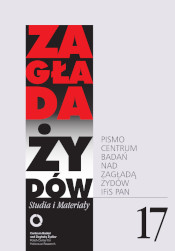

.jpg)
.jpg)


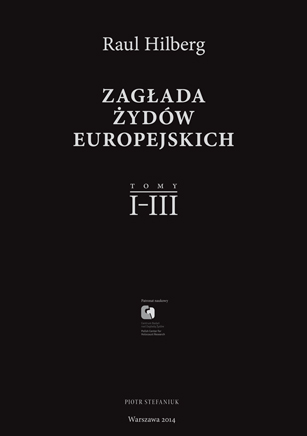
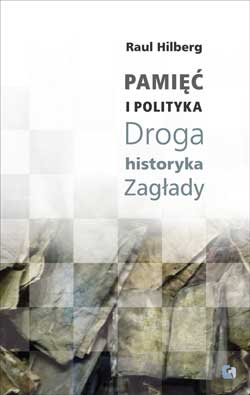
.jpg)
.jpg)
.jpg)
.jpg)
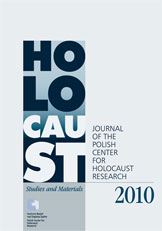

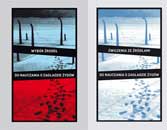
.jpg)
.jpg)
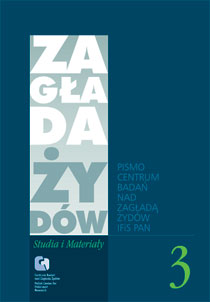
.jpg)
